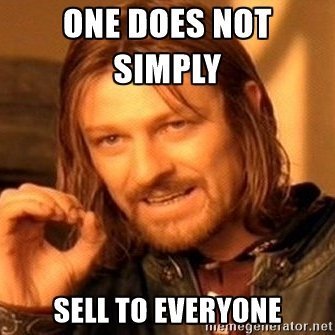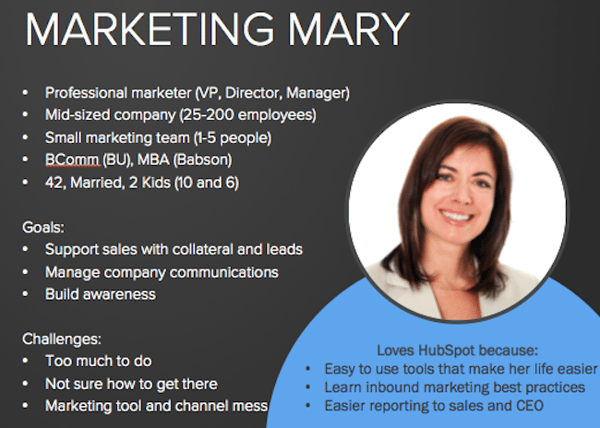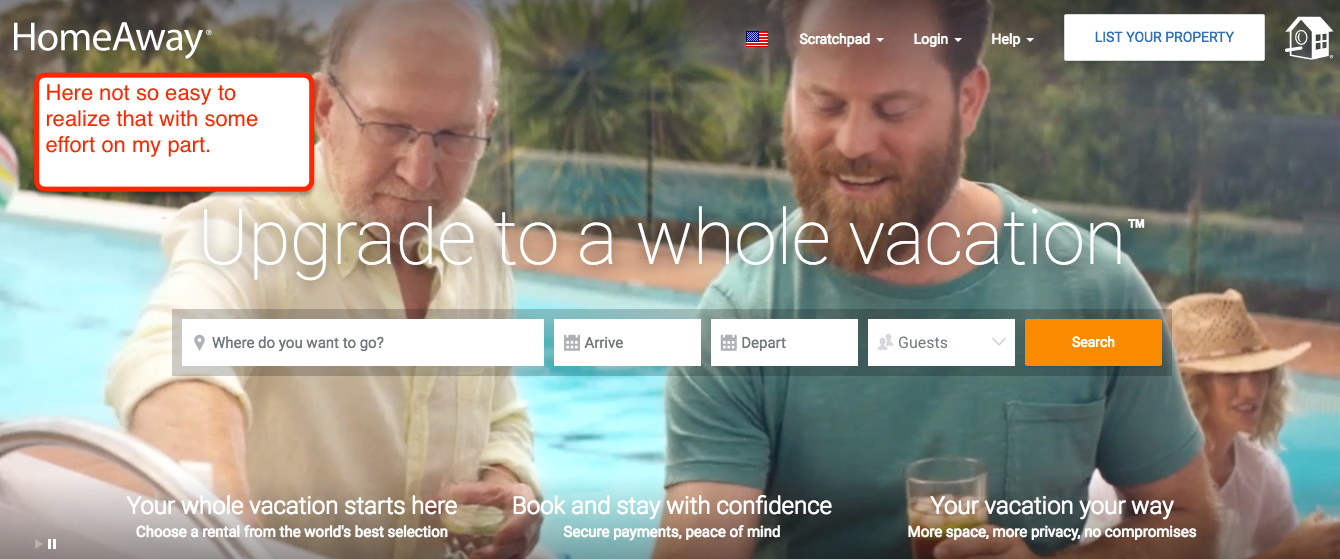If you’re a newer startup that has a marketing plan that is already successful, consider yourself very fortunate and in a very small percentile. What exactly defines a successful marketing plan? Well of course, there are many individualized definitions for this, but basically at this stage your marketing should be bringing in more money than it costs you to have. In essence, you should have some kind of return on investment (ROI).
Stop, I can already hear it in your head. “I’m just getting started, I’m not really selling anything yet so how can I have an ROI at this point”? Let’s not forget the old adage that time is money, so even if you are in the very early stages and are not selling yet, you should be getting something back for your time.
Besides, it will help you all the more if you get your marketing strategy in order now in the earlier phases, than trying to figure all of this out later on in the game when things get more complex.
So without further ado, here are 4 common reasons startups really struggle with their online marketing efforts
1. No Time, Too Hard. (NTTH).
This is a common phrase marketing consultants hear among each other. It’s the reason businesses small and large spend large amounts of money with agencies and outsourcing work.
At the end of the day, nobody is going to know your product better than you will so it's best to keep as many marketing efforts internal as possible when first starting. It’s likely the reason your startup isn’t where it wants to be yet in terms of marketing strength.
But that’s ok; you can take sanction in knowing that you are not alone in the conundrum. The bad news is, the solution to this problem is really as simple as the problem itself:
Guy Kawasaki, the former Chief Evangelism Officer for Apple in the early 00’s, recently did a marvelous talk on the top 10 mistakes that startup entrepreneurs make.
I’d highly recommend you watch it below, but the biggest take away is that the primary focus should be on building an absolutely outstanding product. He stresses the fact that too many entrepreneurs and startups get caught up in the lesser aspects of business building, pitch decks, office furniture to order, conferences to attend, etc.
While that stuff certainly can be important, it should not take away from your main focus of creating an outstanding product
“You took that initiative. You had that passion. You had a dream you wanted to forge into reality.”
I’m in no position to argue with the former Chief Evangelist from Apple, I agree with him 100%. But at the same time I will add that people indeed need to know that your product does exist, so that’s where marketing comes into play. Remember, at the end of the day, nobody put a gun to your head and said, “MAKE THIS STARTUP SUCCESSFUL, OR ELSE!”
You took that initiative. You had that passion. You had a dream you wanted to forge into reality. So be serious about it, get yourself organized and put in the time you need to make your great product and make sure the world knows about your great product.
I’m not here to write about how to get organized and use your time better, there’s tons of great articles out there from psychologists and professional organized people (not sure if that’s even a real profession lol) that can give you guidance on this, but if you’re feeling burned out at the end of each task or each day, just change it.
A simple tip I have is to leverage technology. I personally use Asana, and it’s a great tool to help me stay on track with daily and long-term tasks. Just the mental satisfaction of clicking off each task is a small boost of endorphins each day that I get to keep me focused and prioritized.
Also, make sure to define your goals and have them physically visualized in a way that stares you in the face everyday. I recommend to clients to take their most important, and reachable, goals write them down on a sticky note, and actually stick it to their monitor. Keep that note there until the goal is accomplished, only then can you take it down.
The Japanese actually developed an old folk character for this called Daruma, so if you’re into Asian-themed deco you can get a couple of these dolls for your desk as well!

Daruma The Goal Doll is Watching You
In short, find what works for you, and start using it. Do not become a victim of NTTH.
2. No Persona Definition
One of the first questions I always ask a person in consulting sessions is “Who are you trying to attract”? More often than not, the response I get is “EVERYONE!

WRONG!
Let me be blunt about this, if you truly think you want to attract everyone you are wrong. You are setting yourself up for failure, and you’re going to waste a ton of time in the process, and probably end up becoming a victim of NTTH as a result.
There is not a single company in the world that can say with absolute conviction that their offering fits every person on the planet, so don’t try. Instead, formulate your buyer personas.
A buyer persona is in my definition, a hyper-refined story of the exact person and their life patterns that you want to solve a problem for. Let’s use lieferando.de as an example to show you how this looks. For those unfamiliar, lieferando.de is an online based, food delivery service application in Germany.
Their audience demographic probably looks something like this:
- Both male & female
- Age ranged 18 - 35
- Living in major urban areas
That gives us some broad insight, but if they have a real buyer persona defined, I would imagine it looks something like this.
Millennial Michael (Giving them names helps you stay organized)
Michael is in the millennial age category, and is typically in his first or second major career path. He typically drives away from the standard 9-17 work schedule, and much more prefers the “Just get stuff done” mentality. Because of this, working at home or on the go is common, as is perhaps very early morning starts or even later evenings. Michael is single, likely living on his own for the first time. Michael typically is not very skilled at cooking, and doesn’t really have an interest in getting better at it. He’s tried a couple of times, but it becomes more effort for him to buy all the ingredients, learn a recipe, only to inevitably fail at it. He finds it more economic, and overall pleasurable, to just eat from restaurants. Michael is not a super tech junkie, but knows his way around social media and likes to read up on various blogs online.
Now we’ve painted a story for your marketing plan, and with this story, your plan of attack can always come back to solving specific pain points for Michael. You refine your personas over time as you learn more about your product and your market, but this always gives you a very concise story to fall back on when you’re struggling for new content or marketing ideas. Still need more help with this, then check out this guide on how to create your personas.
If you want to utilize an awesome tool to help you even more with your persona development, I use this persona creation tool to maintain all the personas I need for the SpinLab.
 This is another example of a buyer persona, just in a different format.
This is another example of a buyer persona, just in a different format.
Common questions I get regarding personas
1. How many personas should I have?
As many as you need to specify T-R-E-N-D-S. You should have one persona for each set of trends that you can identify. For some companies this may be only one persona, for some it may be in upwards of 300 or even more.
2. How should I formulate them?
With real data...WITH REAL DATA! Your personas should be based on data, not on assumptions. Go through your existing customer databases and find the patterns that lead to conversion. Comb through your Google Analytics and figure out how exactly people are interacting with your site. Don’t have any customers yet?
Talk to the guy who is figuring out your sales strategy. Don’t have a guy figuring out your sales strategy yet? Then get to social media and do some searches for the problems you are trying to solve, it may not be your data, but it’s data nonetheless. You’ve got to expand your listeners and start looking for customer pain points in places you have not thought about before.
A side note on data: If you ever have a marketing manager that says the words "I have a feeling..." and doesn't have real data to back up that "feeling" fire him or her, and get a new marketing manager.
3. How do I use them in practice?
First off, every piece of content you put out on your digital channels should speak to your personas. In the lieferando.de example above, a piece of content that would be relevant here would be a blog article that talks about 6 key ingredients you should stock in your kitchen, that can make over 20 different dishes easily.
It solves a pain point, it establishes trust, and it puts eyes on your product. Maybe Michael reads that article, and still feels it is too much work, but hey maybe now he figures out he can just order something during that same laptop session, win for lieferando!
Secondly, segment based on your personas. In the above example, lieferando would have a segment simply titled “Michael” where they follow social media efforts, SEO, email, you name it, it should be watched here.
This way you can figure out how different personas really should be, and maybe where they have some overlap. Too much overlap usually results in persona consolidation, which is not a bad thing for you.
Lesson learned, formulate your personas in the beginning so you can watch them grow and evolve them with your own data over time. This will consolidate efforts, and save you time in the long run.
3. Product Tunnel Vision & Weak Messaging
This is YOUR product, and you should absolutely be proud of it and everything it can do! What you should not do is get devoured by it, and lose track of the actual problems you’re solving. Remember that, and revisit your personas often to get reminded of this, you built a product to ultimately solve a problem.
Nobody builds a product for the sake of just building something; every good product out there is solving a difficult or commen problem.
The trouble I see founders running into is they think they run out of things to say about their products, however if you really master your personas and the problem you’re solving for, content generation will be much easier to find.
I’ve utilized two simple steps with previous clients to help them get out of their own product tunnel vision.
1. Talk about benefits, not features.
Let’s use Michael again from the above lieferando example I created above. If you think about lieferando as a core product on its own, it’s ultimately a web application that helps people order food. You can only talk about this specific feature set so many different ways before you start feeling like you’re running out of things to say.
Just thinking off of the top of my head, what sounds like a stronger message to send to Michael:
- Lieferando is a new web app that delivers food to you from over 1000 different restaurants!
- Another late night at the office? Keep focusing on the goal, we’ll bring dinner to you so you can get the job done.
Now one could argue both ways, which one they think is a stronger message, but as mentioned in the persona step, do we base our decisions based on assumptions?
Nope. In an ideal world, we’d run both of these and use the data to see what is actually the better performer. The point is when you open your problem solving set to target the benefits your persona could actually experience, you open up a whole pool of new content and messaging ideas. This will keep your messages fresh, and will help your creativity from feeling drained.
2. Always get the product to stand on its own
This is another common trap, founders to overcomplicate / over-buzzword / over-tech-level their products. It’s so easy to do in modern times, as the startup world is becoming more and more attractive.
People want to feel like they’re “in the scene.” But the truth is, if you need to be standing next to your website to explain what it does, your messaging is weak. Even a video is too much assistance, it’s great to help deep dive into your product should the user choose to, but your messaging on your website should be able to get the user to care about your product, with as little effort as possible.

Key takeaway, focus your messaging on solving problems, and get your messaging to define your product on its own.
4. Throwing money at the problem too early on in the game
The last thing I have seen way too often is startups, actually all companies, throwing money at the problem too soon. There’s a stigma that exists that because you spend money on it, means it will give higher returns. Based on what I’ve seen, when in the earlier phases for every Euro a company gives to paid online marketing channels, they’re lucky if they get a Euro and fifteen cents back. Usually, those returns are more likely 0 due to poor planning.
Don’t get me wrong, Adwords, Facebook Ads, Linkedin Marketing, etc. are all great tools if utilized carefully and properly. It is just a matter of learning to walk before you try to run. There’s so many things that need to be planed when going into paid tools, keyword planning, landing page design, who to target, and the list goes on and on. It’s definitely not the place to start.
The thing is, if you start your plan here, even if you’re successful from the start chances are that success will be highly dependent on how long you choose to keep paying the service. If you don’t plan anywhere else, the instant you stop spending money here, your traffic and your customers will heavily decline.
Launching a solid organic campaign can translate to better quality conversions over time, and you own that online presence for as long as your website stays active.
What to do? Save the paid marketing for when you have a really defined idea of what you’re going after. If you’re going into paid ads “just to try it” stop yourself, and go revisit the persona step.
5. Focusing too much on dated outbound marketing techniques
Outbound, or traditional marketing channels, has its time and place. But I advise you to not get sucked into the lure of pricey advertisements and print campaigns as a startup. It costs a ton of money, it's very hard to measure in the phase, doesn't bring you a lot of data to further develop your buyer personas, and it really doesn't work too well as a whole for startups in the beginning. You just don't have the customer intelligence you need at this point to launch this properly.
If you need a crash course on the difference between inbound (the approach we recommend) and outbound marketing, check out our short video below.
TL;DR
If you’re a startup, here’s 4 key reasons you’re likely struggling with your marketing and what you should do about it.
1. No time, too hard (NTTH). You don’t have enough time to adequately plan your marketing ideas.
What to do? Prioritize, get organized, and remember this is your product. For it to shine, the world must know it exists. Utilize technology aspects such as Wunderlist to get your tasks in order. If you feel burned at the end of each day, find something that works for you and start doing it.
2. No Buyer Personas Defined. You’re either wasting time trying to attract the whole world, or you’re not effectively figuring out whom you really want to speak to.
What to do? Create your buyer personas, and reference them often. Don’t create the personas based on assumptions, do the research, query current customer information, ask sales teams, look online. Find the problems and create the stories of the people you want to sell to.
3. Product Tunnel Vision & Weak Messaging. You don’t know how to continue marketing your product, or you feel it needs a lot of effort to explain to people what it does.
What to do? Talk about benefits instead of features. Check out your now defined personas, and make sure you’re solving for actual real world problems. Measure the effects often, and see what speaks best. Always make sure you’re also keeping your messaging as simple as possible, if people don’t understand what your product does, they won’t become customers.
4. Throwing money at the problem. You didn’t know where to really start, and you felt paying Adwords, Facebook Ads, etc. would give you a good start.
What to do? Don’t, there’s a lot of planning that goes into paid campaigns, and there is a lot more you can do in the early stages that will have greater long term effect, and cost you much less money. Learn to walk before you can run.
Feeling better about your options? Agree with something? Disagree with something? Let us know in the comments below!






/RootCamp_Logo-Ecosystem.png?width=200&name=RootCamp_Logo-Ecosystem.png)
/Bitroad_Logo-Ecosystem.png?width=200&name=Bitroad_Logo-Ecosystem.png)



/White%20Versions/stadt_leipzig_white.png?width=130&name=stadt_leipzig_white.png)
/lfca_white.png?width=119&name=lfca_white.png)
/bmwi-white-engl-2022.png?width=573&name=bmwi-white-engl-2022.png)
/White%20Versions/sachsen_signet_white.png?width=90&height=362&name=sachsen_signet_white.png)